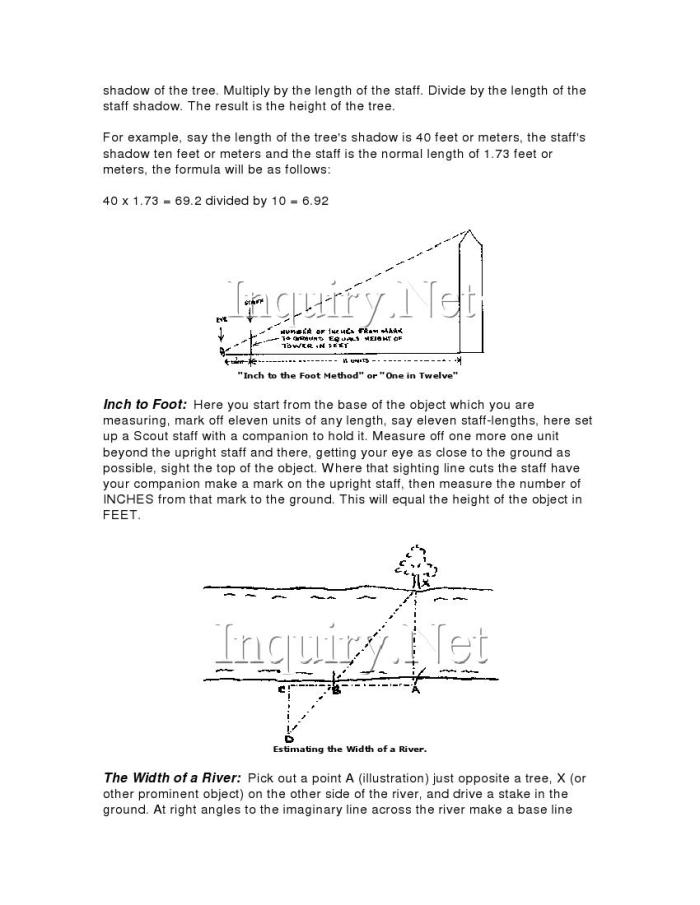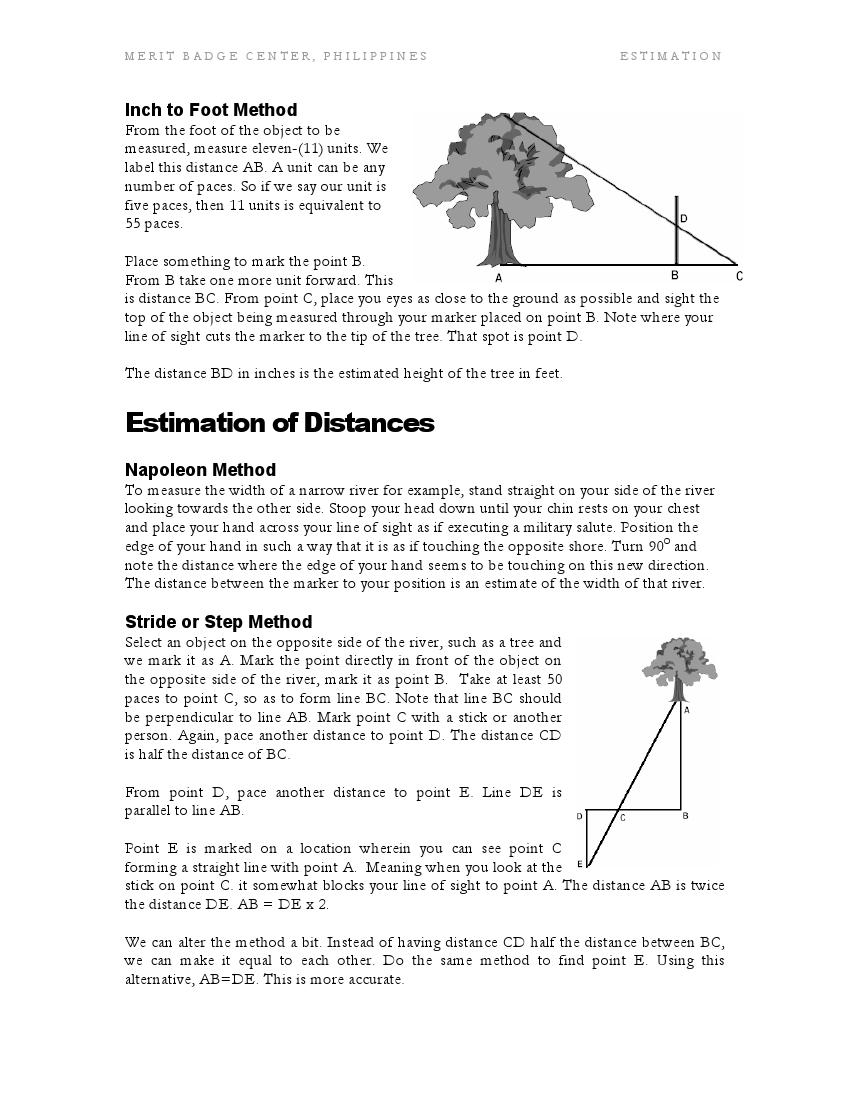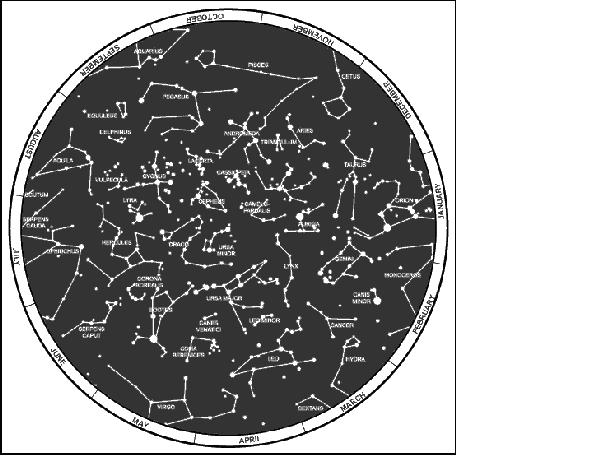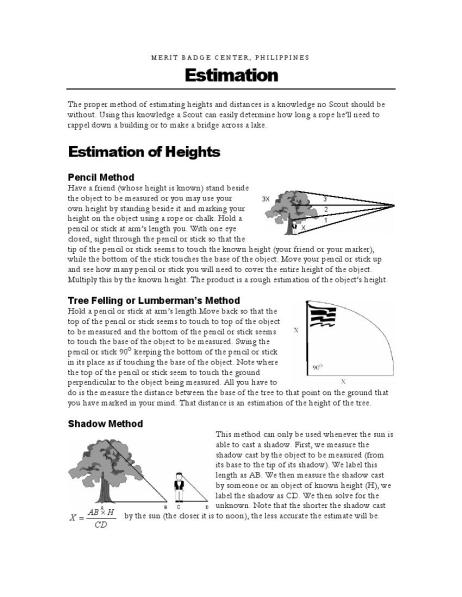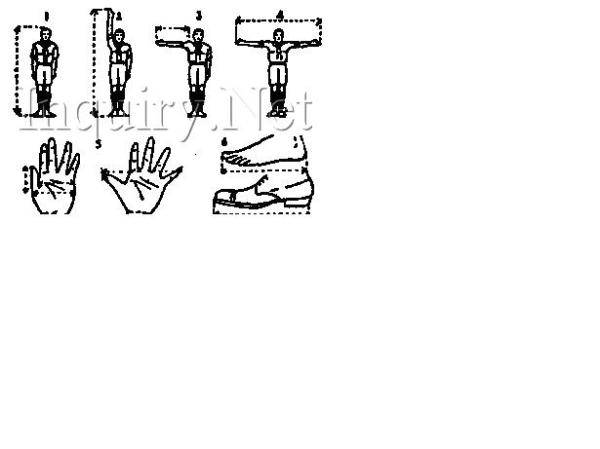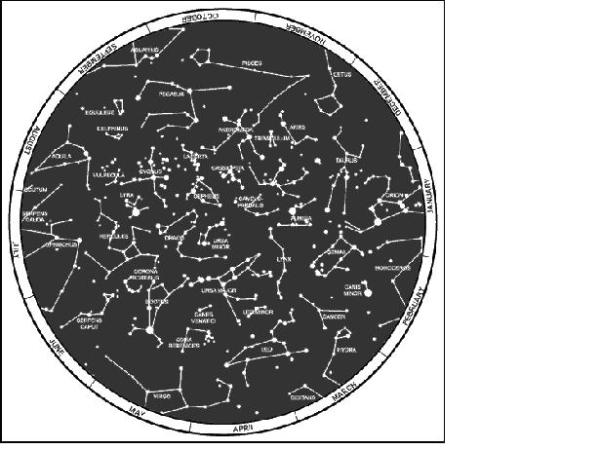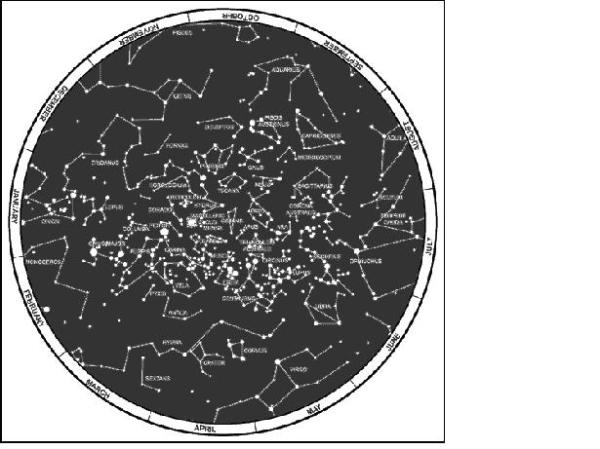8) SCOUT PACE-
A pace (or double-pace or passus) is a measure of distance used in Ancient Rome. It is the measure of a full stride from the position of the heel when it is raised from the ground to the point the same heel is set down again at the end of the step. Thus, a distance can be “paced off” by counting each time the same heel touches ground, or, in other words, every other step. In Rome, this unit was standardized as two gradūs or five Roman feet (about 1.48 meter or 58.1English inches). There are 1000 passus in one mille, and a mille was sometimes referred to as a mille passus.
The Byzantine pace or vema (βήμα [ˈvima]) was 2½ feet (pous)
A pace in modern terminology is usually taken as being a single pace rather than a double pace. It has no formal definition but is taken as being around 30 inches
9) COMPASS BEARING-
Bearings
A directional compass is shown below. It is used to find a direction or bearing.
The four main directions of a compass are known as cardinal points. They are north (N), east (E), south (S) and west . Sometimes, the half-cardinal points of north-east (NE), north-west (NW), south-east (SE) and south-west (SW) are shown on the compass. The above compass shows degree measurements from 0° to 360° in 10° intervals with:
. Sometimes, the half-cardinal points of north-east (NE), north-west (NW), south-east (SE) and south-west (SW) are shown on the compass. The above compass shows degree measurements from 0° to 360° in 10° intervals with:
north representing 0° or 360°east representing 90°south representing 180°west representing 270°
When using a directional compass, hold the compass so that the point marked north points directly away from you. Note that the magnetic needle always points to the north.
Bearing
The true bearing to a point is the angle measured in degrees in a clockwise direction from the north line. We will refer to the true bearing simply as thebearing.
For example, the bearing of point P is 065º which is the number of degrees in the angle measured in a clockwise direction from the north line to the line joining the centre of the compass at O with the point P (i.e. OP).
The bearing of point Q is 300º which is the number of degrees in the angle measured in a clockwise direction from the north line to the line joining the centre of the compass at O with the point Q (i.e. OQ).
Note:
The bearing of a point is the number of degrees in the angle measured in a clockwise direction from the north line to the line joining the centre of the compass with the point.
A bearing is used to represent the direction of one point relative to another point.
For example, the bearing of A from B is 065º. The bearing of B from A is 245º.
Note:
Three figures are used to give bearings.All bearings are measured in a horizontal plane.
10) 16 POINTS OF A COMPASS-
Boxing the compass is the action of naming all thirty-two principal points of thecompass in clockwise order.
Navigational compass
mariner‘s compass
(Larger)#Compass pointAbbreviationTrue Heading1.NorthN0.00°2.North by eastNbE11.25°3.North-northeastNNE22.50°4.Northeast by northNEbN33.75°5.NortheastNE45.00°6.Northeast by eastNEbE56.25°7.East-northeastENE67.50°8.East by northEbN78.75°9.EastE90.00°10.East by southEbS101.25°11.East-southeastESE112.50°12.Southeast by eastSEbE123.75°13.SoutheastSE135.00°14.Southeast by southSEbS146.25°15.South-southeastSSE157.50°16.South by eastSbE168.75°17.SouthS180.00°18.South by westSbW191.25°19.South-southwestSSW202.50°20.Southwest by southSWbS213.75°21.SouthwestSW225.00°22.Southwest by westSWbW236.25°23.West-southwestWSW247.50°24.West by southWbS258.75°25.WestW270.00°26.West by northWbN281.25°27.West-northwestWNW292.50°28.Northwest by westNWbW303.75°29.NorthwestNW315.00°30.Northwest by northNWbN326.25°31.North-northwestNNW337.50°32.North by westNbW348.75°

Before the Magnetic Compass was discovered, early map makers would draw a small 16 pointed circle on the map, and place an “N” to point to North. These were the 16 Cardinal Points from which the winds were thought to blow. This drawing was called a “Wind Rose.” When the magnetic compass came along, it was usually set on top of the Wind Rose pattern in order to help face the nautical chart in the proper direction. The wind rose started to become known as a COMPASS ROSE.
Since the 1100’s, compass bearings have been split into 16 different directions:
North – North North East – North East – East North East – East
East – East South East – South East – South South East – South
South South West – South West – West South West – West
West North West – North West – North North West – North
This was all the accuracy a Mariner’s Compass had to offer then. By today’s standards, it was not very accurate. As spherical mathematics improved, it became more customary to give bearings in units of “Degrees” from Geographic North. In the 1920’s, it became an accepted practice to indicate direction, called HEADING or BEARING, by a single number (0 to 360) representing degrees of a circle as measured clockwise from True North.
The development of the compass instrument itself represents quite an achievement, however the actual use of this instrument is more of an art form. The Compass is not by any means a complex instrument. Anyone from 9 to 90 should be able to learn compass operation with just some practice and understanding a few simple principles.
11) WHAT IS A COMPASS-
A compass (or mariner’s compass) is navigational instrument for finding directions. It consists of a magnetised pointer free to align itself accurately withEarth‘s magnetic field. A compass provides a known reference direction which is of great assistance in navigation. The cardinal points are north, south, east and west. A compass can be used in conjunction with a clock and a sextant to provide a very accurate navigation capability. This device greatly improved maritime trade by making travel safer and more efficient.
A compass can be any magnetic device using a needle to indicate the direction of the magnetic north of a planet’s magnetosphere. Any instrument with a magnetized bar or needle turning freely upon a pivot and pointing in a northerlyand southerly direction can be considered a compass. A compass dial is a small pocket compass with a sundial. A variation compass is a specific instrument of a delicate type of construction. It is used by observing variations of the needle. A gyrocompass can also be used to ascertain true North.
12) MORSE CODE-
In the Morse Code letters are formed by a series of dots and dashes by using a Morse Key attached to a buzzer. Because of its adaptability, Morse Code is more useful than Semaphore, but it requires much practice to become proficient.
Morse Code signals and their meaning:
VE VE VE Calling up signal
K Carry On. (Answer to VE, if ready to receive message)
Q Wait. (Answer to VE if not ready to receive message.)
T General answer
AAA Period or decimal
AR End of message
R Message received correctly
8 dots Erase.
GB Good Bye. (used when closing down)
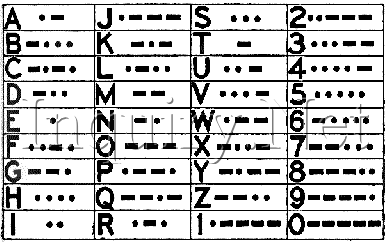
13) SEMAPHORE SIGNALING-
Semaphore signaling is used mainly for short distance communications.

Some points to remember:
Signaling is useful only when it can be read. The letters must be made perfectly and must be clearly seen. The sender must exactly face the person they are signaling. They must stand firmly, with the feet apart. The flags must be at arms reach, arm and flag making a straight line. The arms must be in the exact position for each letter. When making T, O, and W the flags must not cover one another. When making double letters bring the flags in to the body after the first letter. Do not send too quickly. Never send faster than the other person can read.
14) SIGNALING-
Signaling is well worth knowing. It is good fun to be able to signal your friend across the street without other people understanding what you are talking about. Before the development of telephones or radios, signal codes allowed many people to communicate over long distances.
Telegraph operators used Morse Code to send messages around the world. Sailors used both Morse and Semaphore to pass messages between ships. It is still makes an exciting hobby for licensed amateur radio operators. While there are few practical applications for these signaling methods in today’s world, they are useful to know in case of an emergency.
15) PRECAUTIONS - GAS LEAK
Safe Handling of LPG
LPG gases are combustible and highly flammable. LPG can burn or explode when it comes in contact with air or a source of ignition. It has the potential to create a disaster. Since LPG is stored under pressure, it can leak from any joint or improperly sealed connection. Awareness or knowledge of safe handling LPG can eliminate the chance of fire or explosion. Following are some useful tips for safe handling of LPG cylinder.
In the early morning, proper precaution is required to ensure that there no gas buildup in the room, by opening doors and windows prior to turning on the stove.LPG containers are not to be placed in close proximity to the stove or any other sources of flame.Ensure that the gas tube is not squashed or severely bent.Choose an LPG supplier who can provide you with well-maintained LPG cylinders, and after-sales support.Replace the LPG cylinder hose on a regular basis, and replace any damaged or worn hose with a new hose.Landlords who use agents to manage properties need to ensure that tenants are aware of safe use of LPG and LPG rubber tubes they use have an ISI mark.Never check for gas leaks using a lit match. Always use a solution of soapy water and look for bubbles coming from around valves and pipe joints. These bubbles indicate a gas leak.After securely connecting a new or refilled cylinder, apply some soapy water to the cylinder connections and turn on the cylinder.Any burning objects must be extinguished prior to installation of any equipment to the new LPG cylinder.Spare cylinders should not be kept next to cylinder in use.Do not store kerosene or other flammable equipments in the kitchen.In order to avoid danger, cylinders and its accessories must be used according to the usage instruction.Never switch on the electricity or light stove when LPG scents are present.Use a child-safe regulator on the LPG cylinder for domestic use.Using domestic cylinder for commercial purpose is illegal and if caught legal actions are taken against the consumers under the Essential Commodity Act which is forfeiture of cylinder, penalty and imprisonment up to 3 years.It is safer to evacuate everyone from the area.
Leaking of LPG
If escaping gas is not on fire, close any valve which will stop or reduce the flow of gas.Turn off or remove any other source of ignition.Ventilate the room by opening doors and windowsIf you think that there is a danger of a fire, inform your gas supplier or Fire Department and your neighbors immediately.
LPG is on fire
If you have a fire fighting equipment, make sure that you know how to use it, and that it is maintained regularly. If you can’t put it out, leave it to the fire brigade. It is safer to evacuate everyone from the area.A small fire from a container may be smothered by a wet cloth or dry powder extinguisher and then it may be possible to stop the leak and remove the cylinder to a safe location.If the gas is escaping in large quantities and has been ignited, immediately apply large quantities of water to all surfaces in the form of a jet, spray or fog.If the only valve which can be used to stop the flow of gas is involved in the fire, consider the possibility of effecting the shut-off by approaching the valve behind a water spray. This approach should be made at right angles to the flame and the spray used to reduce the intensity of the flame but not to extinguish it.Portable LPG cylinders should be removed to a safe location.If you feel the situation is not under control of you, call experts or call Fire Department immediately.
15) SAFETY PRECAUTIONS WITH REGARD TO FIRE-
Outdoor Fire Safety Rules for Scouts-
A large part of scouting is going on camping trips, and there are few things as pleasant during a camping trip as sitting by a fire, telling stories, roasting marshmallows, and enjoying the warmth and glow of the flames. However, to fully enjoy this experience and to ensure that you do not lose control of the fire, you need to observe some basic fire safety rules. By building, tending and extinguishing a fire safely, you can ensure that you are upholding your promise as a scout to treat nature with respect.
Location
Whether in a remote area or within the confines of a scout camp, where fire pits may already be on-site, you need to ensure that the location of the fire is suitable. Remove all burnable debris, twigs and leaves in a 10-foot diameter circle from the spot where you plan to build your fire. This will help to ensure that the fire cannot spread easily. Make certain you do not build the fire in an area with overhanging branches or old stumps nearby. Be sure to have water and a shovel nearby so that you can extinguish the fire quickly if necessary.
Building a Fire
The fire-making process should be supervised by the scout leader. A fire does not have to be large to provide warmth. A good bed of coals and some stones surrounding the fire will produce plenty of heat. Use small twigs and leaves to start the fire and add bigger pieces of wood as the fire grows. Point the largest pieces of wood toward the center of the fire and push them inward as they burn.
Keep any additional wood stacked a safe distance from the fire. Even small gusts of wind can cause a fire to spread. Never run or play around a fire. You must always remember the potential harm that fire can cause and treat it respectfully. Never leave a fire unattended.
Extinguishing the Fire
Use plenty of water to douse the fire. Use a shovel to stir the coals so that you can be certain there are no remaining embers. Mix in dirt with the water and stir the embers some more. Repeat this process until you can safely touch the remnants of the fire with your bare hands. Be sure to clean the area around the campfire and leave the site ready for others to enjoy. Scouts should always remember that the goal is to leave a natural area as if you had never been there.
16) THROWING A LIFE LINE -

Be able to throw a life line with reasonable accuracy.
All Scout camp and other Scout “swimming holes”, should, like public
swimming pools, be equipped with a life line and lifebuoy, hanging on the pegs
of a conveniently placed post; and Scout
Be Prepared
-ness should includethe ability to throw these.
Life lines usually are of half-inch hemp or manila rope, the length depending
upon the distance concerned.
The Test
For this test a rope between 30 and 50 feet in length should beused; and the thrower should place the bowline loop within grasping reach of
the “person in difficulty” four times out of five; any kink spoiling a throw.
The line always should be pliable and free of kinks. To assure this, and
whether kept coiled on a peg or otherwise, the line should regularly be taken
down and thrown a few times, then carefully re-coiled.
Life lines at public swimming pools sometimes have a weighted end, for
throwing. These, however, can be dangerous in the hands of an inexpert rescuer.
It is safer to make a bowline in one end of the line, with the advantage
that this loop can be grasped readily by the person being rescued, and probably
drawn over his head and shoulder, which makes his rescue sure.
Coiling a Life Line
It is most important that a life line be properlycoiled. To do this (having first made a bowline), hold the bowline in the left
hand, as the first coil. Now, with a twisting overhand movement (to equalize
kink tendency when thrown), add turn against turn until completed.
Now turn the coil completely around, so that the bowline is in the right
hand, and divide it, holding two thirds in the right hand, the balance in the
left, the end securely gripped, or better yet, tied to a post or tree.
Throwing
With a single, long under-arm swing (no whirling about thehead), heave the coil, aiming at a point directly beyond the person in difficulty-
unless there is a current to allow for-at the same time opening the left hand
to allow that portion of the line to run free. (For a left-handed Scout the procedure
would be reversed.
After Use
Dry line before re-coiling.
New Rope
A new rope will require stretching. This may be done by tyingit at a “reaching” height between two suitably spaced trees, then hanging on
it. As it stretches it is tightened, until the stretch limit has been reached.
17) ANIMAL BITES
Overview
Domestic pets cause more bitesDogs more likely to bite, cats more infectiousRisk of rabies with non-immunized pets / stray / wild animalsRaccoons, skunks, foxes, bats too carry rabies
Symptoms
Skin break Bruise / punctureCutsBleedingSwelling and redness of the areaOozing of fluid
Treatment
Calm the affected personWash hands before attending to woundWash wound with soap & running waterApply antibiotic ointment Dress using sterile bandageAfter first aid, medical treatment must be sought quicklySuturing may be requiredTetanus booster / antibiotics requiredTreatment depends on type / location of wound
Prevention
Avoid keeping wild animals as pets Choose a pet that is friendly to childrenTrain the pet to obey commandsVaccinate your petWhen children are around, pets supervision is requiredAvoid leaving infants alone with pets
18) INSECT BITES AND STINGS
Insect bites are, mostly, not severe Sometimes they cause a severe allergic reaction, anaphylaxisAnaphylaxis is life-threatening if not treated on timeSting of bees, wasps, hornets / bite of fire ants, painful Bites of insects, like mosquitoes, cause itchingThe bite of a black widow spider can be fatal, if left untreated
Causes Examples of biting insects
MosquitoesFleasMitesSpiders
Examples of stinging insect
BeesWaspsHornets
Symptoms
Localized PainSwellingRednessItchingNumbnessBurningTingling sensationBreathlessnessWeakness
Treatment
Remove the stinger using a straight- edged objectWash the area thoroughly with soap and waterPlace ice wrapped in a cloth on the affected areaRepeat after every 10 minutesApply a gentle cream to prevent itchingTake anti histamines if necessaryObserve for signs of infection like pain, redness or swelling
In case of emergency-
Try to keep the person calmCheck the person’s breathingRemove constricting items, like rings, from finger/nose/earsDo Cardio Pulmonary Resuscitation (CPR), if necessaryIf the person is carrying an emergency kit, use itIf required, treat the person for signs of shock Seek medical help as soon as possible
Consult a Doctor In case of the following, seek medical help
WheezingSwelling on the faceDifficulty in breathingTight feeling in the throat Body turning blue
Steps to Avoid
Do not remove the stinger using a tweezerDo not apply a tourniquetAspirin, pain medications, should not be given unless advised by a doctor
Prevention
Avoid placing hand near the mouth of a seizure-affected person
Take caution to prevent your child from developing biting habit.
19) BURNS AND SCALDS-
Burns are caused by dry heat, corrosive substances and friction. Scalds are caused by wet heat – hot liquids and vapours. Burns can also be produced by extreme cold, and by radiation, including the sun’s rays. Burns may be related to, or a result of, a more life-threatening situation. Fires may be started accidentally by victims of drug or alcohol overdose. An explosion, or jumping from a burning building, may cause other serious injuries. When burns have been treated, the casualty should be thoroughly examined.
Assessing a Burn
There are a number of factors to consider when assessing the severity of a burn and the method of treatment, including the cause of the burn, whether the airway is involved, the depth of the burn, and its extent.
The extent of the burn will indicate whether shock is likely to develop, as tissue fluid (serum) leaks from the burned area and is replenished by fluids from the circulatory system. The greater the extent of the burn, the more severe the shock will be. The cause of the burn may also signal any other possible complications. Burns also carry a serious risk of infection, which increases according to the size and depth of the burn. The body’s natural barrier, the skin, is destroyed by burning, leaving it exposed to germs.
Depth of Burns
Burns can be categorised as follows:
Superficial burns
These involve only the outer layer of the skin, and are characterised by redness, swelling and tenderness. Typical examples are mild sunburn, or a scald produced by a splash of hot tea or coffee. Superficial burns usually heal well if prompt first aid is given, and do not require medical treatment unless extensive.
Partial-thickness Burns
These damage a ‘partial thickness’ of the skin, and require medical treatment. The skin looks raw, and blisters form. These burns usually heal well, but can be serious, if extensive. In adults, partial-thickness burns affecting more than 50% of the body’s surface can be fatal. This percentage is less in children and the elderly.
Full-thickness Burns
These damage all layers of the skin. Damage may extend beyond the skin to affect nerves, muscle and fat. The skin may look pale, waxy, and sometimes charred. Full-thickness burns of any size always require immediate medical attention, and usually require specialist treatment.
Extent of Burns
The area of a burn gives an approximate indication of the degree of shock that will develop and, in conjunction with depth, can be used as a guide to the required level of treatment. The ‘rules of nine’ is a guide used to calculate the extent of a burn as a percentage of the body’s total surface area, and to assess what level of medical attention is required.
In an otherwise healthy adult:
Any partial-thickness burn of 1% or more (an area approximating to that of the casualty’s hand) must be seen by a medical practitioner.A partial-thickness burn of 9% or more will cause shock to develop, and the casualty will require hospital treatment.A full-thickness burn of any size requires hospital treatment.
Severe Burns and Scalds
The priority is to cool the injury; the longer the burning goes unchecked, the more severely the casualty will be injured. Resuscitate the casualty only when cooling is underway. All severe burns carry the danger of shock.
Treatment of Severe Burns and Scalds
DO NOT overcool the casualty; this may dangerously lower the body temperature.
DO NOT remove anything sticking to the burn; this may cause further damage and cause infection.
DO NOT touch or interfere with the injured area.
DO NOT burst blisters.
DO NOT apply lotions, ointment, or fat to the injury.
Lay the casualty down, protecting the burned area from contact with the ground, if possible.Douse the burn with copious amounts of cold liquid. Thorough cooling may take 10 minutes or more, but this must not delay the casualty’s transmission to hospital.While cooling the burns, check airway, breathing, and pulse, and be prepared to resuscitate.Gently remove any rings, watches, belts, shoes, or smouldering clothing from the injured area, before it starts to swell. Carefully remove burned clothing unless it is sticking to the burn.Cover the injury with a sterile burns sheet or other suitable non-fluffy material, to protect from infection. A clean plastic bag or kitchen film may be used. Burns to the face should be cooled with water, not covered.Ensure that the emergency service is on its way. While waiting, treat the casualty for shock. Monitor and record breathing and pulse, and resuscitate, if necessary.
Burns to the Mouth and Throat
Burns to the face, and burns in the mouth or throat are very dangerous, as they cause rapid swelling and inflammation of the air passages. The swelling will rapidly block the airway, giving rise to a serious risk of suffocation. Immediate and highly specialised medical assistance is required.
Treatment of Burns to the Mouth and Throat
Contact the emergency service. Report suspected burns to the airway.Take any steps to improve the casualty’s air supply, e.g., loosening clothing around the neck. Give the casualty oxygen if you are trained to do so.If the casualty becomes unconscious, place in the recovery position, and be prepared to resuscitate.
Minor Burns and Scalds
Minor burns and scalds are usually the result of domestic accidents. Prompt first aid will generally enable them to heal naturally and well, but the advice of a medical practitioner should be sought if there is doubt as to the severity of the injury.
Treatment of Minor Burns and Scalds
DO NOT use adhesive dressings.
DO NOT break blisters, or interfere with the injured area.
DO NOT apply lotions, ointments, creams, or fats to the injured area.
Cool the injured part with copious amounts of cold water for about 10 minutes to stop the burning and relieve the pain. If water is unavailable, any cold, harmless liquid such as milk or canned drinks will suffice.Gently remove any jewellery, watches, or constricting clothing from the injured area before it starts to swell.Cover the injury with a sterile dressing, or any clean, non-fluffy material to protect from infection. A clean plastic bag or kitchen film may be used
20) SPRAINS-
Sprain is the stretch/tear of ligament connecting ones Occurs in both the upper & lower part of the body Most common sites – ankle/wrists/knee
Causes
Trauma/accidents Lifting heavy objects Sporting injuries
Symptoms
Pain Swelling Lumps other than swelling Bruising/redness at site of injury Numbness Inability to move the joint
Treatment
Apply a cold compress to injured area for 20 min This may be done 4-8 times a day Use a plastic bag with crushed ice, wrapped in a towel Use compression bandages to reduce swelling Keep the injured leg elevated on a pillow Take anti inflammatory pills if necessary Take rest for the recommended period When pain/swelling is diminished, do recommended exercises
Consult a doctor If the following occurs-
Severe pain/numbness Inability to move the joint Inability to assess the severity of injury
Steps To Avoid
Do not return to normal activities if not completely cured This could lead to the problem turning chronic
Prevention
Avoid exercising/sporting when tired Eat a well balanced meal-for healthy muscles Avoid unhealthy weight gain Exercise daily-particularly stretching exercises Do warm-up before exercising Practice safety measures, like avoiding clutter Run on even surface .Do not wear ill-fitting shoes
21) BLEEDING FROM NOSE-
A nose bleed occurs when a small vein, along










